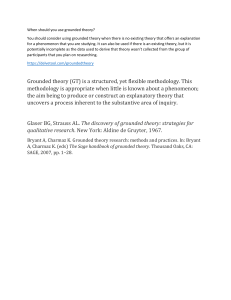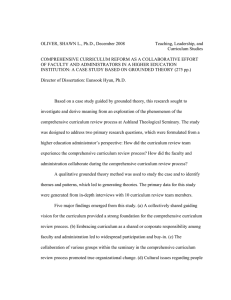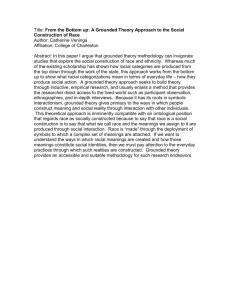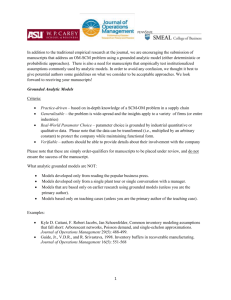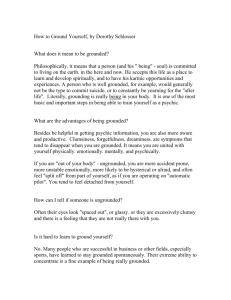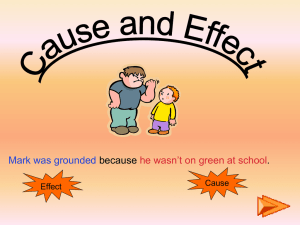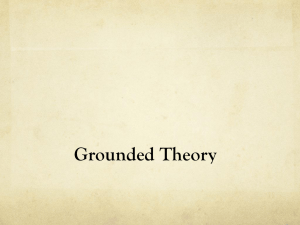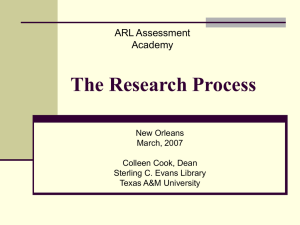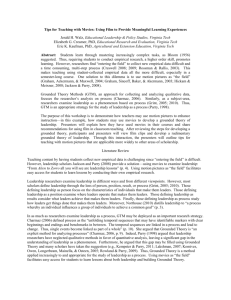An Interdisciplinary/Collaborative Approach to Qualitative
advertisement
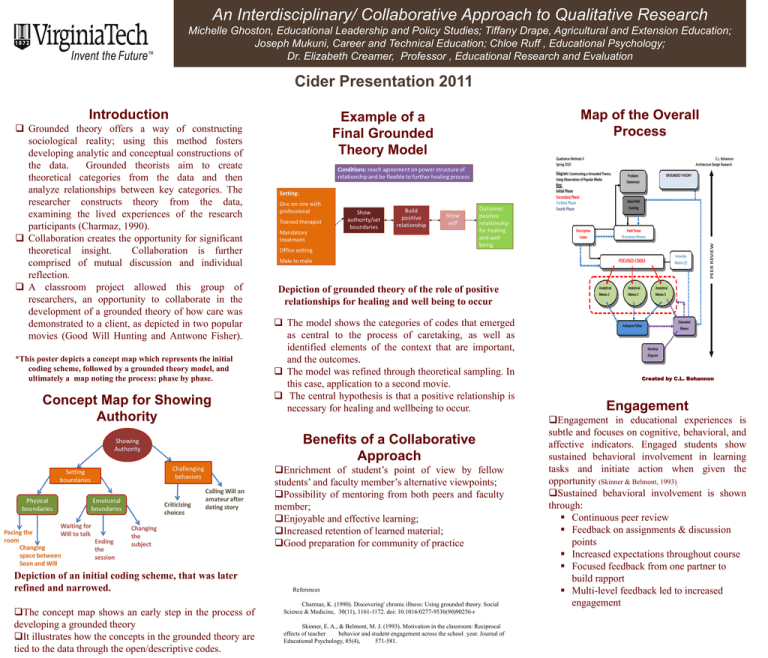
An Interdisciplinary/ Collaborative Approach to Qualitative Research Michelle Ghoston, Educational Leadership and Policy Studies; Tiffany Drape, Agricultural and Extension Education; Joseph Mukuni, Career and Technical Education; Chloe Ruff , Educational Psychology; Dr. Elizabeth Creamer, Professor , Educational Research and Evaluation Cider Presentation 2011 Introduction Grounded theory offers a way of constructing sociological reality; using this method fosters developing analytic and conceptual constructions of the data. Grounded theorists aim to create theoretical categories from the data and then analyze relationships between key categories. The researcher constructs theory from the data, examining the lived experiences of the research participants (Charmaz, 1990). Collaboration creates the opportunity for significant theoretical insight. Collaboration is further comprised of mutual discussion and individual reflection. A classroom project allowed this group of researchers, an opportunity to collaborate in the development of a grounded theory of how care was demonstrated to a client, as depicted in two popular movies (Good Will Hunting and Antwone Fisher). *This poster depicts a concept map which represents the initial coding scheme, followed by a grounded theory model, and ultimately a map noting the process: phase by phase. Concept Map for Showing Authority Example of a Final Grounded Theory Model Depiction of grounded theory of the role of positive relationships for healing and well being to occur The model shows the categories of codes that emerged as central to the process of caretaking, as well as identified elements of the context that are important, and the outcomes. The model was refined through theoretical sampling. In this case, application to a second movie. The central hypothesis is that a positive relationship is necessary for healing and wellbeing to occur. Benefits of a Collaborative Approach Enrichment of student’s point of view by fellow students’ and faculty member’s alternative viewpoints; Possibility of mentoring from both peers and faculty member; Enjoyable and effective learning; Increased retention of learned material; Good preparation for community of practice Depiction of an initial coding scheme, that was later refined and narrowed. The concept map shows an early step in the process of developing a grounded theory It illustrates how the concepts in the grounded theory are tied to the data through the open/descriptive codes. Map of the Overall Process References Charmaz, K. (1990). Discovering' chronic illness: Using grounded theory. Social Science & Medicine, 30(11), 1161-1172. doi: 10.1016/0277-9536(90)90256-r Skinner, E. A., & Belmont, M. J. (1993). Motivation in the classroom: Reciprocal effects of teacher behavior and student engagement across the school year. Journal of Educational Psychology, 85(4), 571-581. Created by C.L. Bohannon Engagement Engagement in educational experiences is subtle and focuses on cognitive, behavioral, and affective indicators. Engaged students show sustained behavioral involvement in learning tasks and initiate action when given the opportunity (Skinner & Belmont, 1993). Sustained behavioral involvement is shown through: Continuous peer review Feedback on assignments & discussion points Increased expectations throughout course Focused feedback from one partner to build rapport Multi-level feedback led to increased engagement
